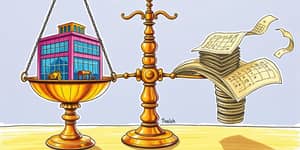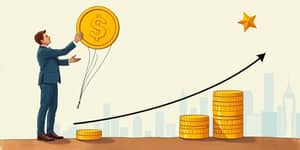
Choosing the right interest rate structure can feel like navigating a stormy sea. Borrowers who learn to interpret market trends and align their borrowing choices with economic cycles unlock opportunities for savings, stability, and confidence.
Fixed interest rates remain unchanged for the entire duration of a loan or credit product. This provides predictable monthly payments that help borrowers plan their budgets without fear of sudden spikes. Lenders price these products slightly higher up front to compensate for the risk of rising rates over time.
Variable interest rates, by contrast, tie directly to a benchmark index—such as the prime rate or LIBOR—and can move up or down at set review periods. Borrowers with variable-rate loans enjoy the chance to take advantage of rate cuts, but also face exposure to rising rates that can inflate monthly obligations.
Understanding how fixed and variable rates perform during different phases of the economic cycle is crucial. Below is a concise comparison of their core features.
Fixed rates shine when markets are at historically low levels or when central banks hint at future tightening. By locking in a rate today, borrowers protect themselves against potential hikes and enjoy budget stability for years.
Variable rates suit borrowers willing to accept some uncertainty for the chance of lower costs. These products work best in high-rate environments expected to soften, or when debt is repaid quickly—before significant rate hikes can occur.
Imagine rates rising quickly: between 2022 and 2023, Fed policy hikes drove the prime rate from around 3.25% to 8.5%. A borrower with a $200,000 variable-rate loan could see payments jump by hundreds of dollars per month. Conversely, in the post-Great Recession era, prime rates fell below 4%, allowing variable borrowers to save significantly.
Consider a 5/1 ARM with an initial rate of 5.5% versus a 30-year fixed mortgage at 7%. On a $300,000 principal, the ARM’s potential for significant savings during the first five years can exceed $1,000 monthly, but it carries the risk of reset spikes thereafter.
Variable-rate loans often include rate caps and floors. A cap limits annual adjustments (often 2%) and sets a lifetime maximum (commonly 10%). Floors ensure rates never drop below a minimum threshold, safeguarding lenders’ interests. Introductory fixed periods, like those in many ARMs, blend the benefits of both structures by offering a fixed-rate honeymoon period.
Borrowers can use a structured approach to decide which rate suits their needs. Reflect on your financial goals and tolerance for change.
Consumers have access to a wealth of educational materials and calculators. The Consumer Financial Protection Bureau and major banks offer online tools to model payment scenarios and compare costs across rate structures.
Most lenders publish product details so borrowers can review rate reset schedules, cap structures, and calculation indexes before committing. This informed approach to borrowing empowers individuals to select the product that best matches their financial profile.
Choosing between fixed and variable rates is not merely a financial decision—it’s a commitment to how you’ll navigate future uncertainties. By understanding market cycles, analyzing your personal goals, and leveraging available tools, you gain control over your borrowing path.
Armed with this knowledge, you can confidently lock in stability or embrace flexibility, knowing that your choice aligns with both economic conditions and your unique situation. The right rate structure transforms debt from a burden into a strategic asset, paving the way for lasting financial security.
References













